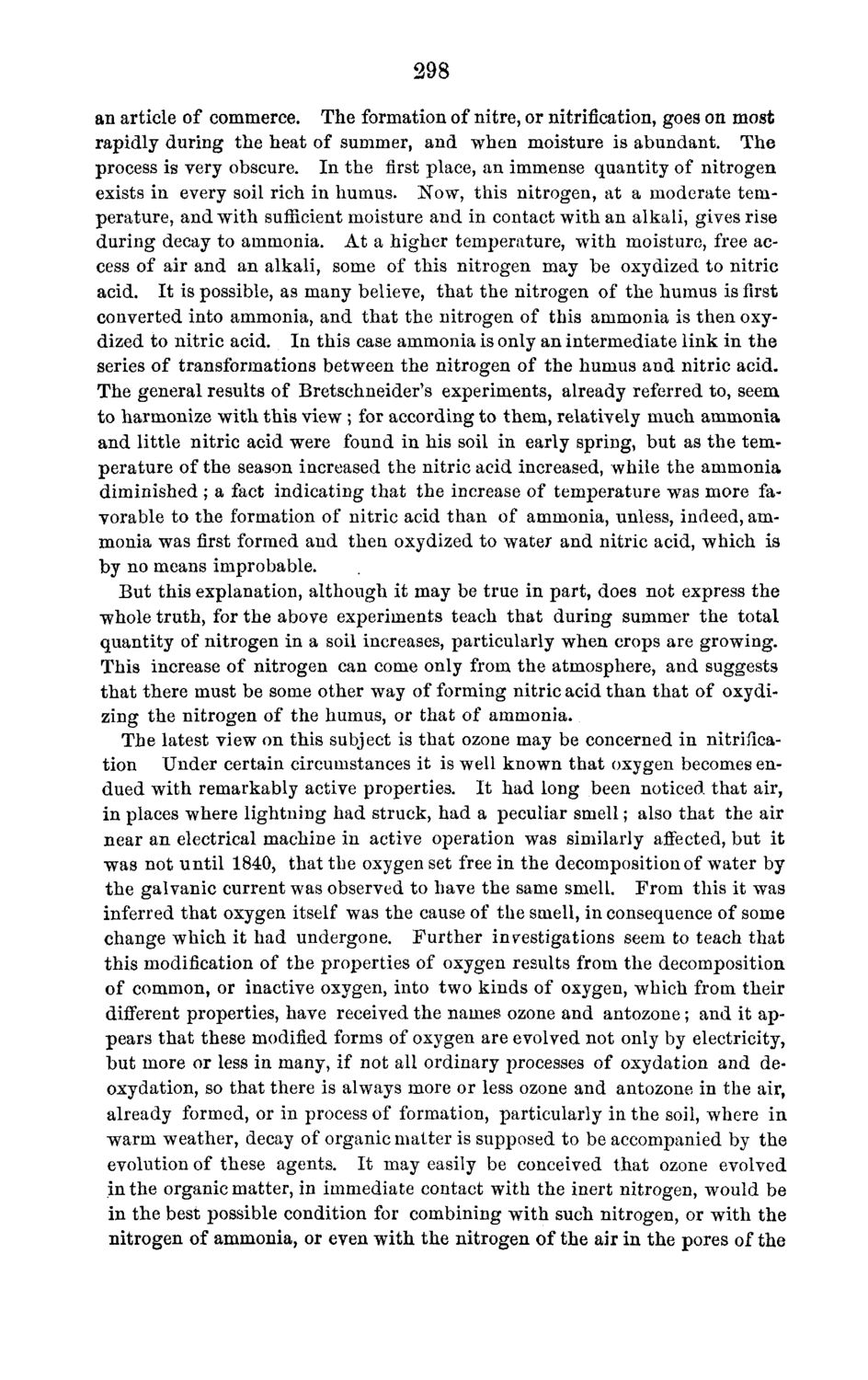| |
| |
Caption: Board of Trustees Minutes - 1870
This is a reduced-resolution page image for fast online browsing.

EXTRACTED TEXT FROM PAGE:
298 an article of commerce. The formation of nitre, or nitrification, goes on most rapidly during the heat of summer, and when moisture is abundant. T h e process is very obscure. In the first place, an immense quantity of nitrogen exists in every soil rich in humus. Now, this nitrogen, at a moderate temperature, and with sufficient moisture and in contact with an alkali, gives rise during decay to ammonia. At a higher temperature, with moisture, free access of air and an alkali, some of this nitrogen may be oxydized to nitric acid. It is possible, as many believe, t h a t the nitrogen of the humus is first converted into ammonia, and that the nitrogen of this ammonia is then oxydized to nitric acid. In this case ammonia is only an intermediate link in t h e series of transformations between the nitrogen of the humus and nitric acid. The general results of Bretschneider's experiments, already referred to, seem to harmonize w i t h this view ; for according to them, relatively much ammonia and little nitric acid were found in his soil in early spring, but as the temperature of the season increased the nitric acid increased, while the ammonia diminished ; a fact indicating that the increase of temperature was more favorable to the formation of nitric acid t h a n of ammonia, unless, indeed, ammonia was first formed and then oxydized to water and nitric acid, which is by no means improbable. But this explanation, although it may be true in part, does not express the whole truth, for the above experiments teach that during summer t h e total quantity of nitrogen in a soil increases, particularly when crops are growing. This increase of nitrogen can come only from the atmosphere, and suggests t h a t there must be some other way of forming nitric acid than that of oxydizing the nitrogen of the humus, or that of ammonia. The latest view on this subject is t h a t ozone may be concerned in nitrification Under certain circumstances it is well known that oxygen becomes endued with remarkably active properties. I t had long been noticed that air, in places where lightning had struck, had a peculiar smell; also that the air near an electrical machine in active operation was similarly affected, but it was not u n t i l 1840, that the oxygen set free in the decomposition of water by t h e galvanic current was observed to have the same smell. From this it was inferred that oxygen itself was the cause of the smell, in consequence of some change which it had undergone. F u r t h e r investigations seem to teach that this modification of the properties of oxygen results from the decomposition of common, or inactive oxygen, into two kinds of oxygen, which from their different properties, have received the names ozone and antozone; and it appears that these modified forms of oxygen are evolved not only by electricity, but more or less in many, if not all ordinary processes of oxydation and deoxydation, so that there is always more or less ozone and antozone in the air, already formed, or in process of formation, particularly in the soil, where in warm weather, decay of organic matter is supposed to be accompanied by the evolution of these agents. It may easily be conceived that ozone evolved in the organic matter, in immediate contact with the inert nitrogen, would be in the best possible condition for combining with such nitrogen, or with the nitrogen of ammonia, or even w i t h the nitrogen of the air in the pores of the
| |